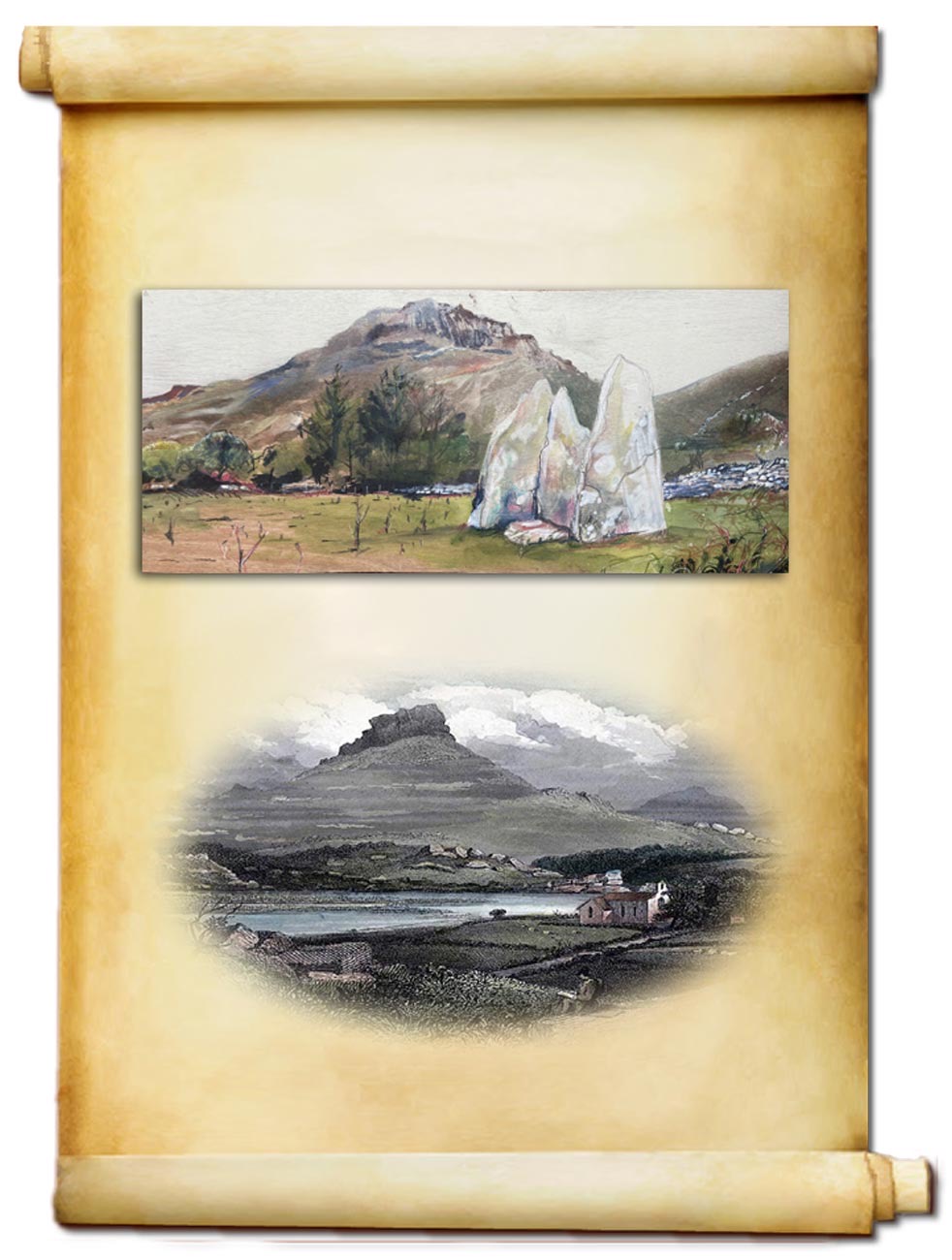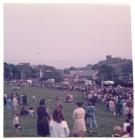Content can be downloaded for non-commercial purposes, such as for personal use or in educational resources.
For commercial purposes please contact the copyright holder directly.
Read more about the The Creative Archive Licence.
Description
Criccieth - Moel y Gest.
Three miles to the east of Criccieth lies Moel y Gest, a rocky hill of 263m (863’). It is surrounded on all sides by low lying land and so is very prominent. It has seen much human activity over millennia. At its summit are iron age ruins that have several peculiarities which make it difficult to understand. There have been several archaeological investigations which are inconclusive and it possible the enclosure has religious rather than military significance though, in the 19th century, a pile of rounded pebbles that could have been slingshot ammunition was found in the vicinity. Located on the west facing slope, 0.75K south of this enclosure is a Neolithic cromlech with remains of Bronze Age hut circles nearby. This monument, known as Cist Cerrig, comprises two uprights and a possible door stone (1). Although in a ruinous state, it has been suggested that a rectangular chamber once existed. The eminent archaeologists from Criccieth, William J. Hemp and Colin A. Gresham, have studied the site and written academic papers with their interpretation.
The name Moel y Gest probably derives from “Bare mountain in Gest”. Gest is the ancient land division, known as a township, that lies between Criccieth and where Porthmadog later developed and includes the parishes of Ynyscynhaearn and Treflys. Robert Isaac Jones, in his book Y Gestiana (1892) gives a very detailed description of the area with historical facts legends and folklore. He writes of the many trials made, searching for iron ore, sulphur, flagstones, roofing slates and the extract of lead and copper on and around the hill. It is possible that the Romans mined for copper at Bron y Gadair. Further work there removed several hundred tons in the 19th century. On the northern slope the granite quarry is very apparent. Setts or square cobblestones and chippings were quarried into the 20th century. The tram incline down to the bottom of the hill can still be seen.
On the western flank of the hill is Bron y Foel, possibly the oldest house in the area. It was the Court or Hall of the descendants of Collwyn ap Tagno. One of its famous inhabitants was Howel ap Gruffydd, known as Syr Hywel y Fwyall (Sir Hywel of the Battleaxe) who was constable of Criccieth Castle in the 14th century. Later generations of this family were in constant conflict over land with the descendants of Prince Owain Gwynedd which led to the house being burnt down.
To the west, from Ystumllyn and Criccieth the hill takes on the profile of the Duke of Wellington with his broken nose! The Duke was famous for winning the Battle of Waterloo and was three time Prime Minister during the 19th century so his appearance was well known to locals and visitors (2). A terrace in Criccieth was named Wellington Terrace as the hill could be seen from there. However, when Capel Seion (Capel y Traeth) was built in the 1890s it obscured the view!






Do you have information to add to this item? Please leave a comment
Comments (0)
You must be logged in to leave a comment